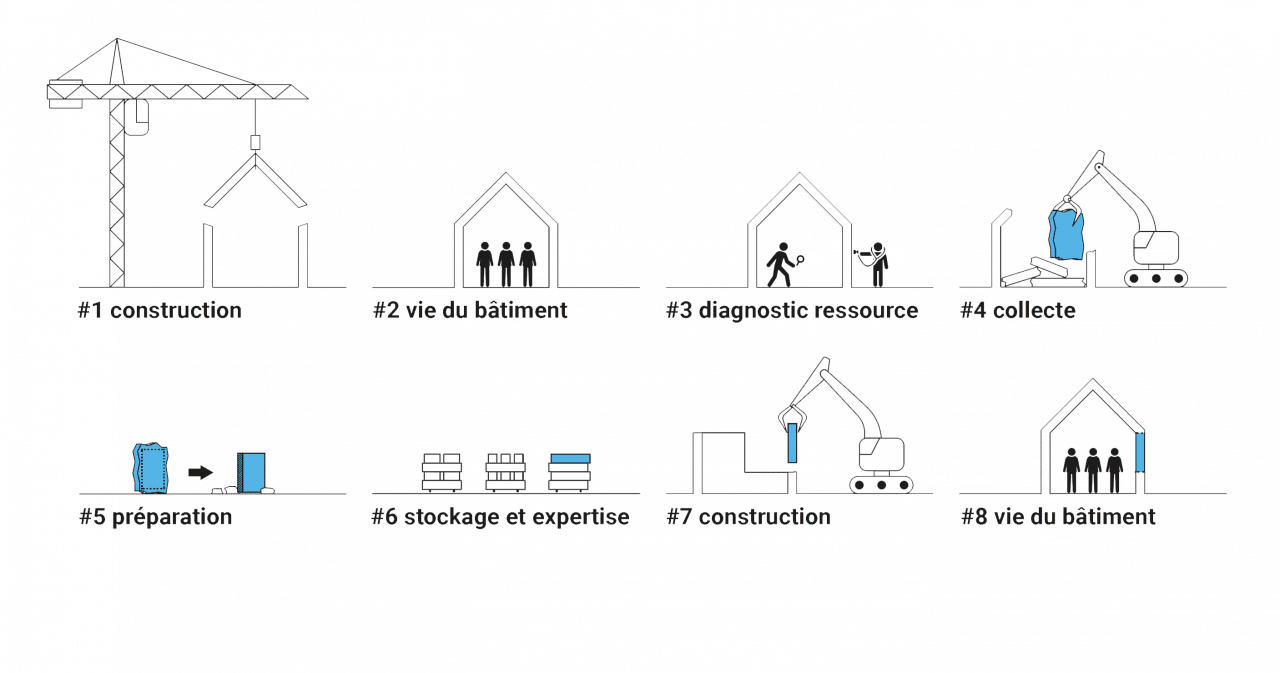SEMINAR 2 JMA-FR
Reuse [EN]
 Les grandes étapes du réemploi. Source : Bellastock, REPAR #2, 2018
Les grandes étapes du réemploi. Source : Bellastock, REPAR #2, 2018CONTENT
The built environment is a major contributor to greenhouse gases: 40% of CO2 emissions are attributed to it. Half of this impact is linked to construction materials. In Switzerland, two thirds of waste come from construction sites. Faced with the climate emergency, reducing the CO2 impact of the construction industry is becoming a major challenge. The reuse of materials is an effective way to reduce waste and the CO2 impact of construction. The objective of the course is to learn about the process of reuse and the issues and constraints related to it. The fact that building materials are not chosen solely according to the architectural will of the designer, but rather according to the temporary and random availability of buildings being demolished, profoundly changes the project process. New knowledge and new constraints must be taken into account for the design of a structure.
TEACHING AIMS
The course wants to provide a holistic view of the practice so that students will be able to navigate when they wish to apply reuse. The following topics will be covered:
– Locating and identifying buildings for demolition.
– Analyzing a building for deconstruction and assessing the quality of building components.
– Dismantling, transporting, storing and reconditioning building elements.
– Know the different actors of reuse.
– Design from reused elements and manage the unknown and the unexpected in a project process.
– Design in anticipation of dismantling.
– Manage the quality of reused materials and guarantee their conformity to standards.
– Build with reused elements.
TEACHING FORMS
In the theoretical part of the course, the challenges of reuse as well as concrete examples are presented by the teachers and invited experts. Through practical exercises in groups, at the PopUp workshop and on dismantling sites, the course aims to give a concrete experience.

